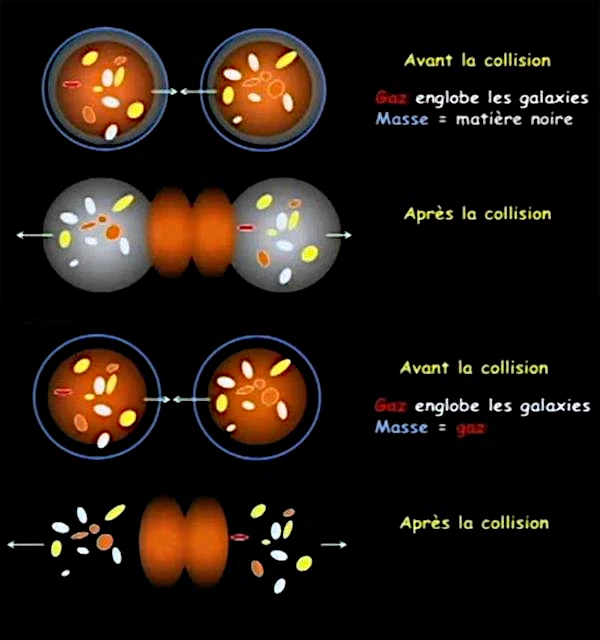
The MOND theory (Modified Newtonian Dynamics) proposes an alternative to dark matter by modifying the laws of gravity at low acceleration. Although it explains certain galactic observations, it encounters difficulties in specific cases, such as galactic cluster collisions. This article explores why MOND fails to explain the observed dynamics in these collisions.
The MOND theory, proposed in 1983 by Mordehai Milgrom (1946-), suggests that gravity behaves differently at very low accelerations, which could explain the flat rotation curves of galaxies without resorting to dark matter. However, this theory remains controversial, especially in complex astrophysical contexts.
The MOND theory, proposed in 1983 by Mordehai Milgrom (1946-), suggests that gravity behaves differently at very low accelerations, which could explain the flat rotation curves of galaxies without resorting to dark matter. However, this theory remains controversial, especially in complex astrophysical contexts.
Galactic cluster collisions, such as that of the Bullet Cluster, provide crucial tests for gravitational theories. In these collisions, baryonic matter (hot gas) and dark matter separate due to their different interactions. The gas, slowed by frictional forces, remains at the center, while dark matter, unaffected by these forces, continues its motion.
The MOND theory, in the absence of dark matter, cannot explain this separation. It predicts that gravity should follow the distribution of visible matter, which is not observed. Gravitational lensing measurements show that most of the mass is outside the gas regions, consistent with the presence of dark matter.
Although the MOND theory offers an interesting alternative to dark matter, it fails to explain the observations of galactic cluster collisions. These cases highlight the necessity of dark matter in our current understanding of the universe. Research continues to better understand these phenomena and reconcile the different theories.